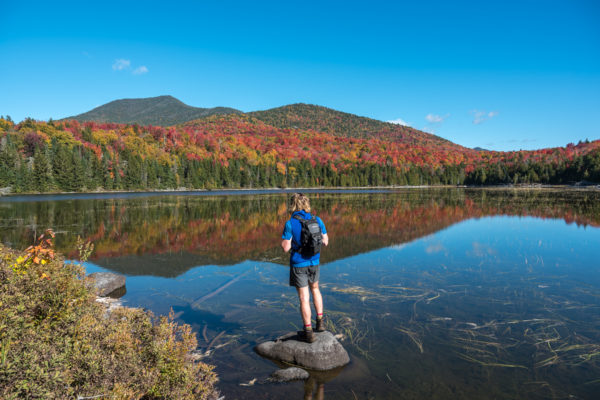The term “overuse” implies that we have too many people visiting the High Peaks. This term, while convenient and perhaps apt, greatly oversimplifies the problem and solution. Certainly, there is an increasing number of users, parking along roadways is becoming dangerous, and rescues are more frequent. But overuse hasn’t been defined in the context of a management framework. We haven’t seen the idea of recreational carrying capacity adopted and defined, or the more nuanced approach of limits of acceptable change implemented. Therefore, we haven’t defined or quantified an appropriate number of visitors to the High Peaks in order to protect the resource and intangible characteristics of Wilderness found there.
A more appropriate way to define the issues surrounding the High Peaks Wilderness are problems with visitor use management. The solution to solving these problems is for the Department of Environmental Conservation to initiate a complex planning process for the High Peaks and surrounding areas. This process will collect the data necessary to define carry capacity or set limits of acceptable change. These are the necessary first steps to
The call for the use of permits is premature and goes against sound Wilderness management principles. The minimum tool rule in Wilderness management states that only the most subtle or minimal approach should be used. Management actions fall along a continuum from the most light-handed options to direct authoritarian options. Education would fall on one end, infrastructure in the middle, and permits on the other end.
The Summit Stewardship Program is a gold star example of the effectiveness of education and how the resource can be protected without resorting to authoritarian systems. Despite the growing number of users, this program has protected one of the most fragile and rare ecosystems in New York through education. New York and the planet are better off because of the hundreds of thousands of interactions Summit Stewards have had with visitors to this ecosystem. If we want people to care about wild lands, they need to have access to them.
There are also many practical challenges of implementing a permit system in a park that has no central entry point and numerous trailheads. There are further considerations about the equity of such a system. A permit system, by its very nature, may further disenfranchise low-income urban families from access to the outdoors, especially those that may not have access to smartphones, the internet, or the financial resources that will make obtaining a permit easy. As Adirondack communities focus on diversity and inclusiveness, we should be breaking down barriers, not building new ones.
Rather than jumping to the apparently easy answer of instituting a permitting system to limit use in the High Peaks we should be encouraging the state to start a meaningful planning process, coupled with the investments in staffing and infrastructure needed to properly manage one of the most magnificent Wilderness areas in the eastern United States. The region receives tens to hundreds of millions of dollars each year in state economic development funding. It’s time we see a similar level of investment in the management of the Wilderness resources that are drawing visitors to our area.
This article first appeared in the Adirondack Explorer.



